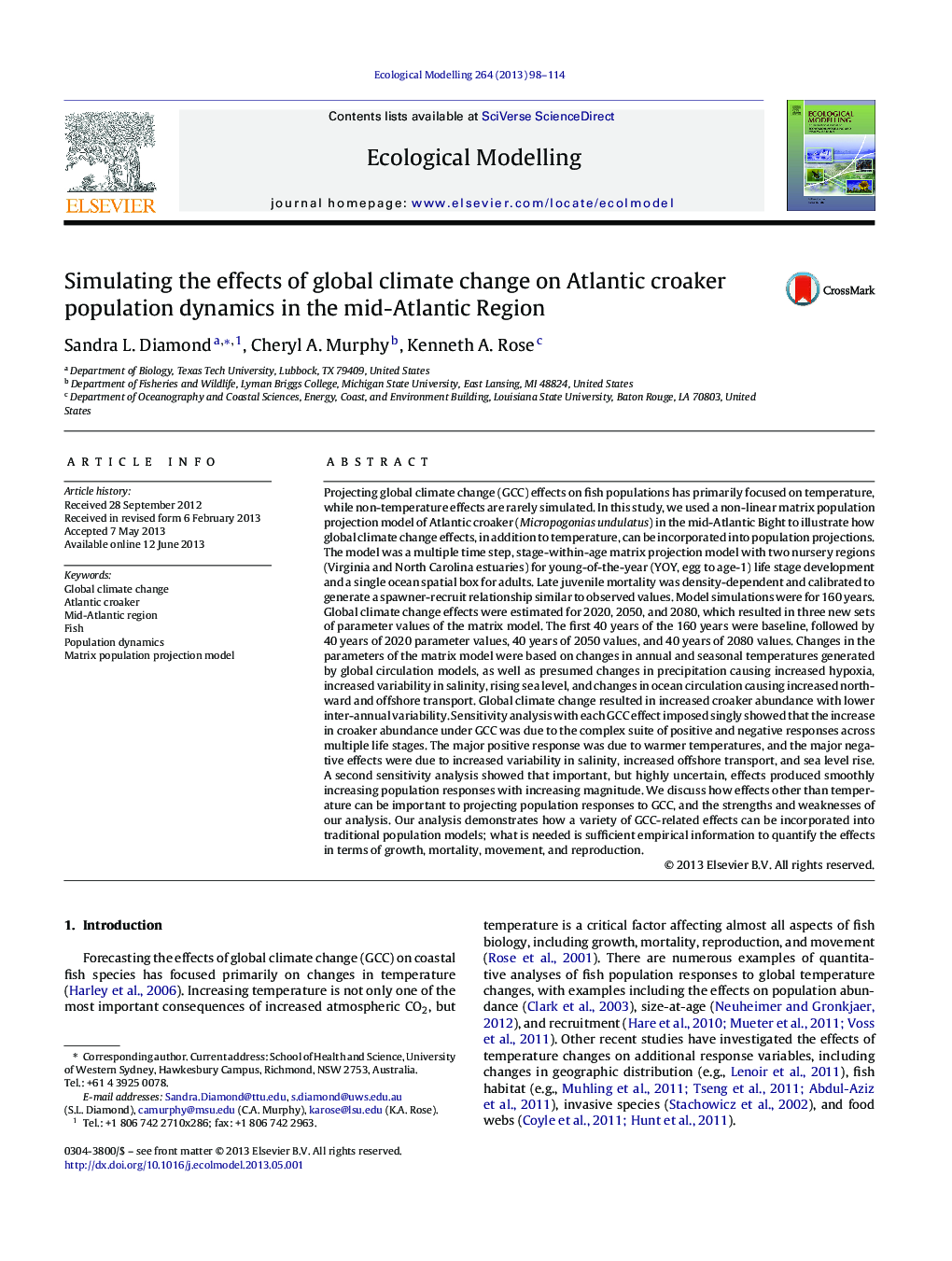| کد مقاله | کد نشریه | سال انتشار | مقاله انگلیسی | نسخه تمام متن |
|---|---|---|---|---|
| 4376089 | 1617482 | 2013 | 17 صفحه PDF | دانلود رایگان |

• We modeled Atlantic croaker with a 7 life-stage, 3-region, 2-cohort matrix model.
• We explored changes in temperature, salinity, hypoxia, sea level, and ocean currents.
• Atlantic croaker abundance will increase but have lower variability under future climate scenarios.
• Increases will be due to temperature, moderated by changes in salinity, offshore transport, and sea level.
• Multiple effects of climate change can be incorporated into population projections if data exists.
Projecting global climate change (GCC) effects on fish populations has primarily focused on temperature, while non-temperature effects are rarely simulated. In this study, we used a non-linear matrix population projection model of Atlantic croaker (Micropogonias undulatus) in the mid-Atlantic Bight to illustrate how global climate change effects, in addition to temperature, can be incorporated into population projections. The model was a multiple time step, stage-within-age matrix projection model with two nursery regions (Virginia and North Carolina estuaries) for young-of-the-year (YOY, egg to age-1) life stage development and a single ocean spatial box for adults. Late juvenile mortality was density-dependent and calibrated to generate a spawner-recruit relationship similar to observed values. Model simulations were for 160 years. Global climate change effects were estimated for 2020, 2050, and 2080, which resulted in three new sets of parameter values of the matrix model. The first 40 years of the 160 years were baseline, followed by 40 years of 2020 parameter values, 40 years of 2050 values, and 40 years of 2080 values. Changes in the parameters of the matrix model were based on changes in annual and seasonal temperatures generated by global circulation models, as well as presumed changes in precipitation causing increased hypoxia, increased variability in salinity, rising sea level, and changes in ocean circulation causing increased northward and offshore transport. Global climate change resulted in increased croaker abundance with lower inter-annual variability. Sensitivity analysis with each GCC effect imposed singly showed that the increase in croaker abundance under GCC was due to the complex suite of positive and negative responses across multiple life stages. The major positive response was due to warmer temperatures, and the major negative effects were due to increased variability in salinity, increased offshore transport, and sea level rise. A second sensitivity analysis showed that important, but highly uncertain, effects produced smoothly increasing population responses with increasing magnitude. We discuss how effects other than temperature can be important to projecting population responses to GCC, and the strengths and weaknesses of our analysis. Our analysis demonstrates how a variety of GCC-related effects can be incorporated into traditional population models; what is needed is sufficient empirical information to quantify the effects in terms of growth, mortality, movement, and reproduction.
Journal: Ecological Modelling - Volume 264, 24 August 2013, Pages 98–114